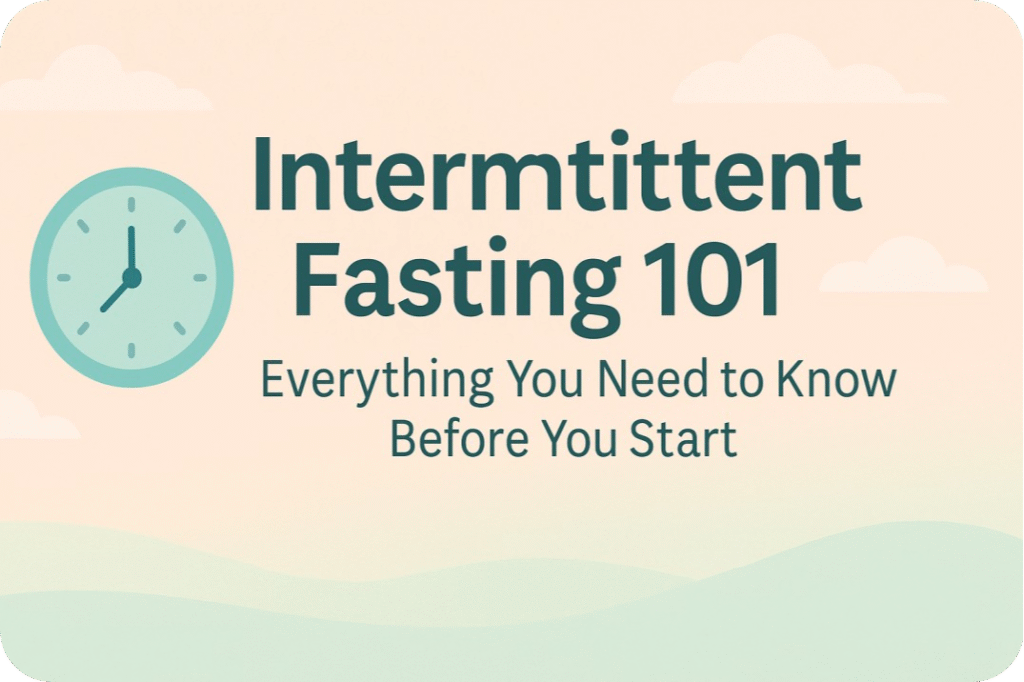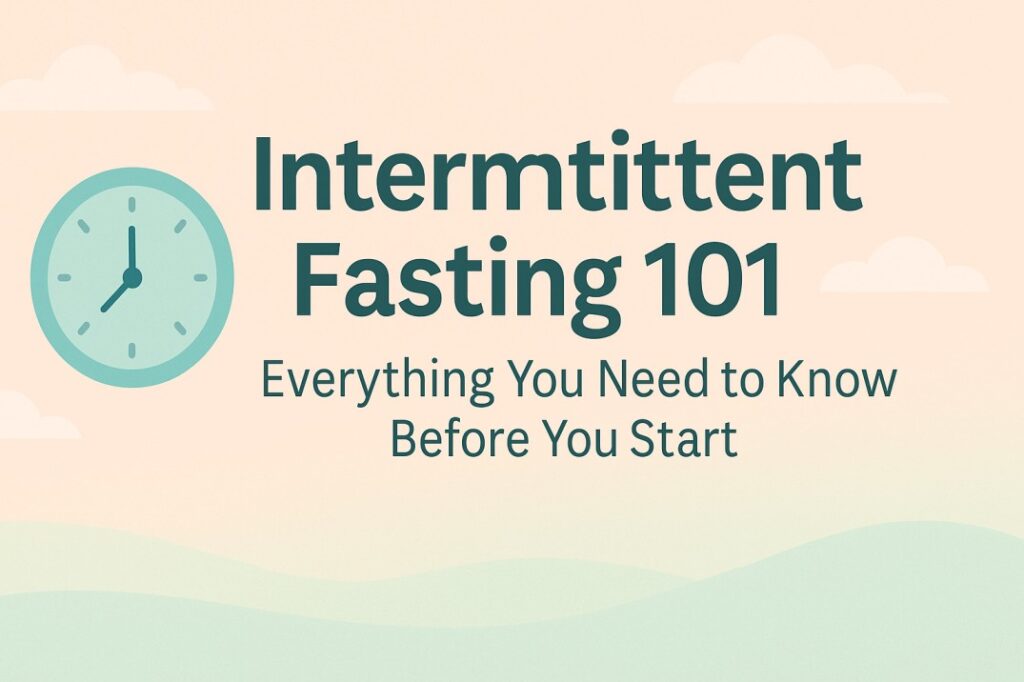So, you’ve been hearing all the buzz about intermittent fasting and you’re wondering if it’s really worth the hype. Maybe a friend swears by it. Maybe you saw it trending on TikTok. Or maybe you’re just tired of strict calorie-counting and complicated diets. Whatever brought you here, you’re in the right place.
Intermittent fasting (or IF) isn’t a diet in the traditional sense, it’s more of an eating pattern. Instead of focusing on what you eat, it focuses on when you eat. And for many people, that simple shift changes everything.
In this beginner-friendly guide, I’ll break down what intermittent fasting really is, how it works, different types of fasting schedules, what benefits to expect (and what’s overhyped), and how to get started the right way. Let’s dive in.

What Is Intermittent Fasting?
At its core, intermittent fasting means alternating between periods of eating and not eating. Sounds basic, right? That’s because it is. You’re not adding any special foods or supplements you’re simply giving your body regular breaks from digestion.
During the fasting window, you consume no calories just water, black coffee, tea, or other zero-calorie beverages. Then, during the eating window, you eat your meals like you normally would (preferably nutritious, balanced ones).
Why It Works
When you fast, your insulin levels drop and your body switches from burning sugar to burning stored fat for fuel. That metabolic shift is one of the key reasons people lose weight and feel more energized on intermittent fasting.
Plus, let’s be honest: most people eat late out of boredom or habit, not hunger. A structured eating window naturally limits snacking, which often leads to fewer calories consumed overall without obsessively tracking every bite.
Popular Intermittent Fasting Schedules
There’s no “one-size-fits-all” approach to intermittent fasting, which is part of its appeal. Here are a few of the most popular methods:
- 16/8 Method: Fast for 16 hours, eat during an 8-hour window. Example: Eat from 12pm to 8pm.
- 14/10 Method: Slightly easier 14 hours fast, 10 hours eating.
- 5:2 Diet: Eat normally for five days, and consume only 500–600 calories on the other two non-consecutive days.
- OMAD (One Meal a Day): Eat just one large meal a day. Not ideal for beginners, but some advanced fasters love it.
Most beginners start with the 14/10 or 16/8 methods because they’re sustainable and easy to follow with a normal lifestyle.
Benefits of Intermittent Fasting
There’s a reason why IF has become so popular. Here’s what the research and thousands of success stories say:
- Fat Loss: IF helps your body access and burn stored fat more efficiently.
- Better Energy: Many people feel more focused and alert during fasting hours.
- Lower Blood Sugar: IF may help regulate insulin sensitivity and support metabolic health.
- Reduced Inflammation: Some studies suggest that fasting can reduce inflammation markers.
- Simplicity: No need for meal prep marathons or strict food lists just time your meals.
See what Healthline says about the science behind IF
What Intermittent Fasting Is NOT
Let’s clear up a few common misconceptions:
- It’s not starving yourself. You’re eating enough just within a set time frame.
- It’s not about skipping nutrition. The goal is to eat high-quality, balanced meals, not binge on junk food when the window opens.
- It’s not magic. It can support fat loss and health, but it still works best when paired with good food and some movement.
How to Get Started (Without Going Crazy)
If you’re new to fasting, don’t feel like you need to go all-in from day one. Here’s a simple game plan:
- Start Slow: Try a 12/12 or 14/10 schedule for the first week and see how your body responds.
- Stay Hydrated: Water is your best friend. Add a pinch of salt or drink herbal teas if needed.
- Don’t Overthink Food: Aim for whole, nutrient-dense meals think protein, veggies, healthy fats, and some carbs.
- Listen to Your Body: A little hunger is normal. Dizziness, weakness, or irritability means it’s time to adjust.
Is Intermittent Fasting Right for You?
While many people do well with IF, it’s not for everyone. If you have a history of disordered eating, are pregnant, diabetic, or on medication talk to a healthcare provider before trying it.
That said, for most healthy adults, it’s a powerful, flexible tool for better energy, weight management, and metabolic health. And unlike most diets, it’s refreshingly simple.
Final Thoughts
Intermittent fasting isn’t a fad it’s a lifestyle shift that can have long-lasting benefits. But like anything else, success comes from consistency, patience, and listening to your own body.
If you’re tired of dieting dogma and ready for something that actually fits into your life, intermittent fasting might just be the answer.
Disclaimer: This post is for informational purposes only and is not medical advice. Always consult your doctor before making major changes to your diet or health routine.


